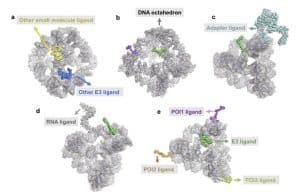

Chemical probes are small molecules that selectively modulate a protein of interest and play a crucial role in understanding protein function and validating new drug targets. Covalent modality represents an important expansion of the repertoire of drug hunters to target poorly ligandable proteins.
Criteria for chemical probes have been established to describe the potency, selectivity, target engagement, and properties of small-molecule probes that are qualified to enable the interrogation and validation of drug targets. However, these definitions have been tailored to reversibly acting modulators but fall short in their applicability to other modalities.
Hartung et al. propose quality criteria for covalent inhibitors are different from those for reversible inhibitors. The authors highlight several examples of suitable probe and pathfinder compounds, including the GPX4 inhibitor ML210, the PARP16 inhibitor DB008, the UCHL1 inhibitor IMP-1710, and the cMyc binder EN4.
Covalent inhibitors have shown promise in targeting proteins that were previously considered undruggable. For example, the KRasG12C inhibitor has shown cellular functional activities at concentrations below 1 μM. The development of covalent inhibitors requires significant efforts to characterize and validate them as a prerequisite for conclusive use in biomedical research and target validation studies.
In my experience it cannot be overstated how important is the SAR of the non-covalent part. It is the positioning through the non-covalent part that facilitates the formation of the covalent bond and drives selectivity.